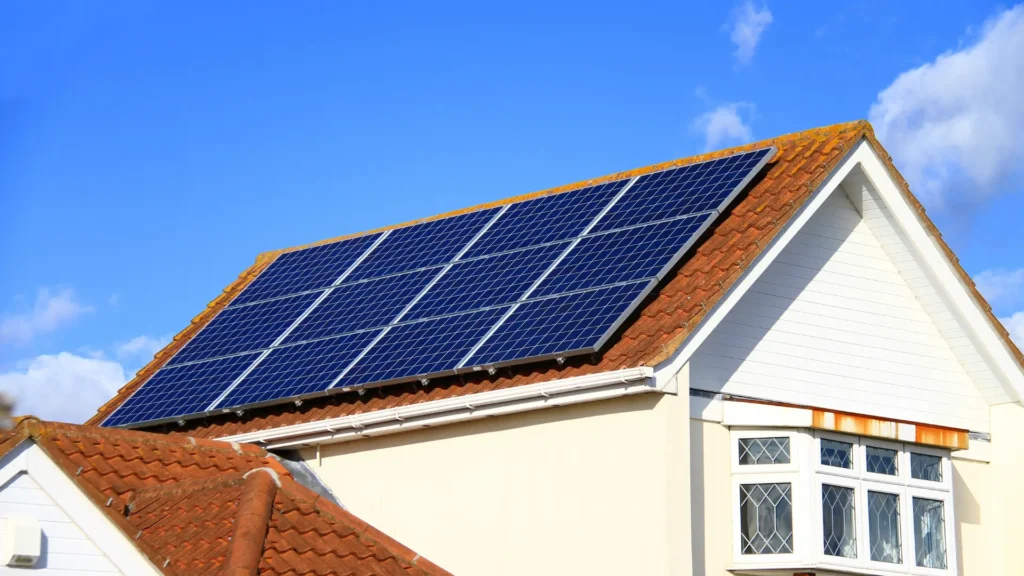Welcome to our beginner’s guide to passive solar design in Central Otago—a region known for its crisp winters, hot summers, and stunning natural light. If you’ve ever felt your home struggle to stay warm in July or overheated in January, you’re not alone. With rising energy costs and growing interest in sustainable living, more homeowners in Central Otago are turning to passive solar design as a smart, low-tech solution. In this guide, we’ll explore how thoughtful home design—using sun, shade, and smart materials—can keep you comfortable year-round while saving money and reducing your carbon footprint. Whether you’re planning a new build or looking to retrofit your current home, this article will give you the insights you need to get started.
Passive solar design in Central Otago uses the region’s abundant sunshine to naturally heat and cool homes through smart orientation, thermal mass, insulation, and window placement. By designing or retrofitting homes to capture and store solar energy, homeowners can reduce energy bills, increase comfort, and build more sustainable, climate-responsive living spaces tailored to Central Otago’s unique seasonal extremes.
Table of Contents
Why Passive Solar Design Is Perfect For Central Otago
Central Otago is one of New Zealand’s most geographically unique regions, and its distinct climate makes it an ideal setting for passive solar home design. With a growing interest in sustainable, low-cost heating and cooling solutions, passive solar design offers a practical, long-term answer to the region’s energy and comfort challenges. Let’s explore why this approach is particularly well-suited to the Central Otago environment.
Understanding Central Otago’s Climate
Central Otago experiences what’s known as a continental climate—a rarity in New Zealand. This means the region is characterized by hot, dry summers and cold, frosty winters, with a large difference between daytime and nighttime temperatures (diurnal temperature variation). These swings in temperature can make traditional heating and cooling systems work overtime, especially in older homes that weren’t built with energy efficiency in mind.
Unlike coastal regions where temperatures remain relatively stable, Central Otago homes must withstand both intense summer sun and biting winter cold. As a result, energy usage tends to spike during the extremes of each season. This makes heating and cooling one of the largest expenses for homeowners in the area.
The Limitations Of Conventional Heating Systems
Many homes in Central Otago rely on electric heaters, wood burners, or heat pumps to stay warm during the colder months. While effective, these methods can be costly, inefficient, and heavily reliant on the power grid or fossil fuels. They also often fail to maintain a consistent temperature throughout the day and night, resulting in discomfort, fluctuating indoor climates, and increased energy bills.
Additionally, conventional heating doesn’t take advantage of the abundant natural sunlight available in the region. Central Otago receives over 2000 sunshine hours annually, which is a valuable yet often untapped resource for home design.
Why Passive Solar Design Makes Sense In Central Otago
This is where passive solar design becomes a game changer. By aligning a home’s orientation, materials, and layout with the movement of the sun, passive solar design maximizes natural heat gain during the day and minimizes heat loss at night. This method reduces the need for artificial heating and cooling, making homes more energy-efficient, comfortable, and cost-effective to run.
For example, a north-facing living area with large, well-placed windows can collect sunlight during the day, while concrete or tiled flooring can absorb and store that warmth for gradual release in the evening. At night, high-performance insulation and thermal curtains help to retain that heat, maintaining a steady, pleasant temperature without turning on a heater.
The use of seasonal shading elements such as eaves or pergolas also plays a key role, allowing sun in during winter while blocking it in summer to prevent overheating. This approach creates homes that adapt naturally to the climate without the need for excessive mechanical intervention.
A Climate That Supports Smarter Living
Passive solar design is not just a trend—it’s a response to the environment. In a region like Central Otago, where weather extremes are part of daily life, building or renovating with passive principles in mind simply makes sense. It leverages the climate instead of working against it, creating homes that are healthier, more efficient, and better suited to modern living.
By using climate-responsive strategies, homeowners can significantly reduce energy bills, lower their carbon footprint, and enjoy consistent comfort year-round. For those building new or retrofitting existing homes in Central Otago, passive solar design is more than an option—it’s a smart, sustainable investment.

What Is Passive Solar Design?
Passive solar design is a smart and simple way to harness the sun’s energy without relying on complex technology. At its core, it’s about designing and positioning a building to work with the natural movement of the sun, so it can heat and cool itself naturally. Instead of using expensive heating or cooling systems, passive solar design focuses on making the most of sunlight, shade, and building materials to maintain a comfortable indoor environment throughout the year.
This design approach is especially useful in regions like Central Otago, where the climate features hot summers and cold winters. With the right planning, a home can be warm in winter, cool in summer, and more energy-efficient all year round—just by letting nature do the heavy lifting.
When people hear “solar design,” they often think of solar panels or high-tech energy systems. That’s where it’s important to understand the difference between passive and active solar design. Active solar systems use devices like solar panels or solar water heaters to collect and convert sunlight into usable energy. Passive solar design, on the other hand, doesn’t involve any mechanical devices. It’s all about the structure of the home itself—how it’s positioned, which materials are used, and how windows, walls, and floors are arranged to naturally store and distribute solar heat.
There are several core principles that make passive solar design work effectively:
- Orientation (North-Facing): In the Southern Hemisphere, north-facing homes receive the most sunlight during the day. By placing the main living areas on the north side and keeping windows to the east and west smaller, a home can capture the maximum amount of heat in winter while minimizing overheating in summer.
- Thermal Mass: Materials like concrete, brick, or stone can absorb heat from the sun during the day and slowly release it at night. This helps regulate indoor temperatures and keeps the home comfortable without artificial heating or cooling.
- Insulation: High-quality insulation in the walls, roof, and floors prevents warm air from escaping in winter and keeps heat out in summer. It’s one of the most cost-effective ways to improve energy efficiency in any home.
- Glazing And Shading: The type, size, and placement of windows matter a lot in passive solar design. Double-glazed windows help trap heat, while proper shading—like eaves, pergolas, or even deciduous trees—blocks excess sun in the warmer months.
- Ventilation: Proper airflow is crucial to prevent overheating and maintain air quality. Features like operable windows, ventilation systems, or even carefully placed vents help move air through the house, creating a comfortable, fresh environment.
You don’t need high-tech gear—just smart design. Passive solar design isn’t just for eco-enthusiasts or architects. It’s a practical, affordable, and proven approach that any homeowner in Central Otago can take advantage of, whether you’re building new or renovating an existing home. It’s about working with nature instead of against it, and that starts with understanding how your home can do more—naturally.
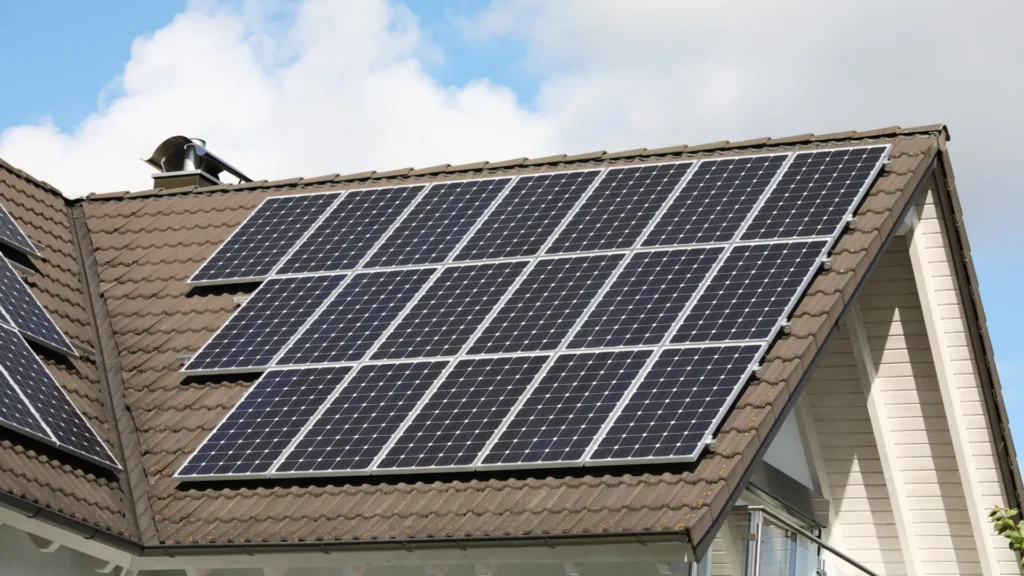
5 Key Elements Of Passive Solar Homes In Central Otago
Designing a home that works with the sun rather than against it is one of the smartest decisions you can make when living in Central Otago. With its unique climate—hot summers, cold winters, and a high number of sunshine hours—passive solar design can dramatically improve comfort while lowering energy bills. Below are the five key elements that make passive solar homes in Central Otago truly effective.
Site Orientation And Layout
The foundation of any passive solar design starts with how the home is positioned on the site. In Central Otago, where winter sun is precious and summer heat can be intense, getting the orientation right is crucial. Ideally, the home should be oriented to the north to maximize solar gain during the colder months. The layout should allow main living areas—like lounges, kitchens, and family rooms—to face north where they can soak up warmth from the sun throughout the day. Less frequently used spaces, such as bathrooms, laundries, and garages, are better positioned on the south side, where sunlight exposure is minimal.
This thoughtful orientation not only improves heating efficiency in winter but also reduces the need for mechanical heating systems. It’s about letting the sun do the heavy lifting when it comes to maintaining indoor comfort.
Thermal Mass
Thermal mass refers to the ability of certain materials—like concrete floors, masonry walls, and brick—to absorb, store, and slowly release heat. In a passive solar home, thermal mass plays a vital role in regulating internal temperatures. During the day, these materials absorb heat from sunlight streaming through north-facing windows. At night, when temperatures drop, they release that stored warmth back into the space.
In Central Otago, where daytime and nighttime temperatures often vary significantly, this slow heat release helps maintain a stable indoor environment. It’s a natural, efficient way to balance heat without relying on electricity or gas. The more efficiently your home captures and retains this solar warmth, the less you’ll spend on heating.
Window Placement And Double Glazing
Windows are both an asset and a potential liability in passive design. In Central Otago, strategic window placement makes a big difference in performance. North-facing windows should be generously sized to allow sunlight deep into the home during winter, while windows on the south side should be minimized to reduce heat loss.
Double glazing is a must in this region. It creates an insulating layer of air (or gas) between two panes of glass, which reduces heat transfer and keeps the warmth in. Well-placed, double-glazed windows ensure you benefit from solar heat during the day while preventing that warmth from escaping at night. East and west-facing windows should be used sparingly, or carefully shaded, as they can cause unwanted heat gain or loss depending on the season.
Insulation Matters
No passive solar design can perform well without excellent insulation. Think of insulation as the thermal blanket that protects your home from outside temperature fluctuations. In Central Otago, where winters can be frosty and heating costs high, insulation in ceilings, walls, and floors is essential.
High-quality, continuous insulation helps trap the heat you’ve collected from the sun during the day and keeps cold air out at night. Without it, even the best passive solar strategy will fall short. Pay special attention to eliminating gaps, thermal bridging, and poorly insulated zones. Well-insulated homes not only retain heat but also create a more comfortable, draft-free living experience year-round.
Seasonal Shading
While maximizing solar gain is important in winter, it’s just as critical to block unwanted heat during the peak of summer. This is where seasonal shading comes into play. The goal is to block high summer sun while still allowing low-angle winter sun to reach your thermal mass.
Effective shading solutions include extended roof eaves, pergolas, and deciduous trees. Eaves can be designed to the correct depth to block summer sun based on the latitude of Central Otago. Pergolas offer flexible coverage and can support seasonal vines that provide shade in summer and allow sun through in winter. Deciduous trees are nature’s own shading system—lush in summer and bare in winter, making them perfect for passive solar design.
Designing shading thoughtfully not only improves summer comfort but also reduces the need for cooling systems. It’s about creating a home that responds to the seasons naturally and effectively.
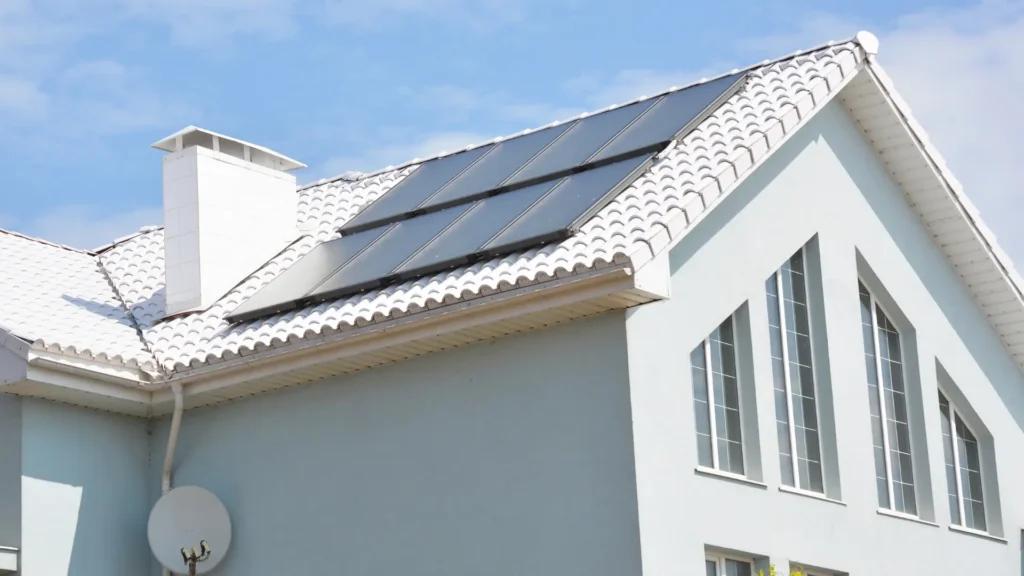
Renovating Vs. Building New – Passive Solar Considerations
When it comes to creating a passive solar home in Central Otago, one of the first decisions homeowners face is whether to renovate an existing house or build a new one from scratch. Both options have their benefits, and with thoughtful planning, each path can lead to an energy-efficient, comfortable, and climate-responsive home. The key is to understand what’s possible with your current structure versus the opportunities available in a new build.
Can Existing Homes Be Adapted For Passive Solar Design?
Yes, many existing homes can be successfully adapted using passive solar principles, though some are more suitable than others. Homes with open north-facing spaces and solid structural elements provide a good starting point. Even if your home wasn’t originally designed with passive solar in mind, targeted retrofitting can make a significant difference in energy performance and year-round comfort.
The most important factor to consider is the orientation of the home. If your main living areas face north or can be reoriented internally, you’re already on the right track. If not, there may still be ways to increase sun exposure to key spaces through layout changes, window additions, or even minor structural modifications.
Key Passive Solar Retrofits For Existing Homes
For homeowners renovating in Central Otago, passive solar upgrades typically focus on a few strategic areas. One of the most impactful is adding thermal mass—materials like concrete or masonry that store heat during the day and release it at night. If you’re replacing flooring, this is the perfect opportunity to choose materials that contribute to better temperature regulation.
Improving glazing is another common retrofit. Installing double-glazed or low-e windows on north-facing walls can greatly improve heat retention in winter, while strategic shading keeps interiors cool in summer. Window treatments, external awnings, or overhangs can also be added to reduce overheating without sacrificing sunlight in colder months.
Layout adjustments can help redirect warmth to frequently used areas. For example, opening up spaces to allow better airflow or relocating living areas to the sunniest parts of the home can create a more efficient thermal envelope.
Is It Better To Build New For Passive Solar Design?
If you have the opportunity to build from scratch, passive solar design becomes even more effective. New builds allow complete freedom in orientation, room layout, materials, insulation, and shading—each element can be optimized to work together in a cohesive system.
Building new also means that thermal mass can be integrated right from the beginning, floors can be aligned to solar angles, and windows placed with precision. Builders and designers can incorporate region-specific knowledge of Central Otago’s climate, maximizing sun exposure in winter while designing features to reduce summer heat gain.
This approach doesn’t just improve energy efficiency—it can also reduce your long-term heating and cooling costs and make your home more comfortable from day one.
Budget-Friendly Passive Design Ideas
Contrary to common belief, passive solar design doesn’t have to be expensive. Many budget-friendly strategies can be implemented in both renovations and new builds. For instance, orienting your living areas to the north, selecting light-colored thermal curtains, planting deciduous trees for natural shading, or insulating ceilings and underfloors can all contribute to passive solar performance without major expenses.
Using locally sourced materials, opting for simple design layouts, and minimizing unnecessary mechanical systems can also help reduce costs. The goal is to make smart decisions early in the process that deliver long-term savings and sustainability.
Whether you’re planning a renovation or starting fresh with a new build, passive solar design offers practical solutions that align with Central Otago’s unique climate. By understanding what’s possible with your budget and your site, you can create a home that’s naturally warm, energy-efficient, and built to stand the test of time.
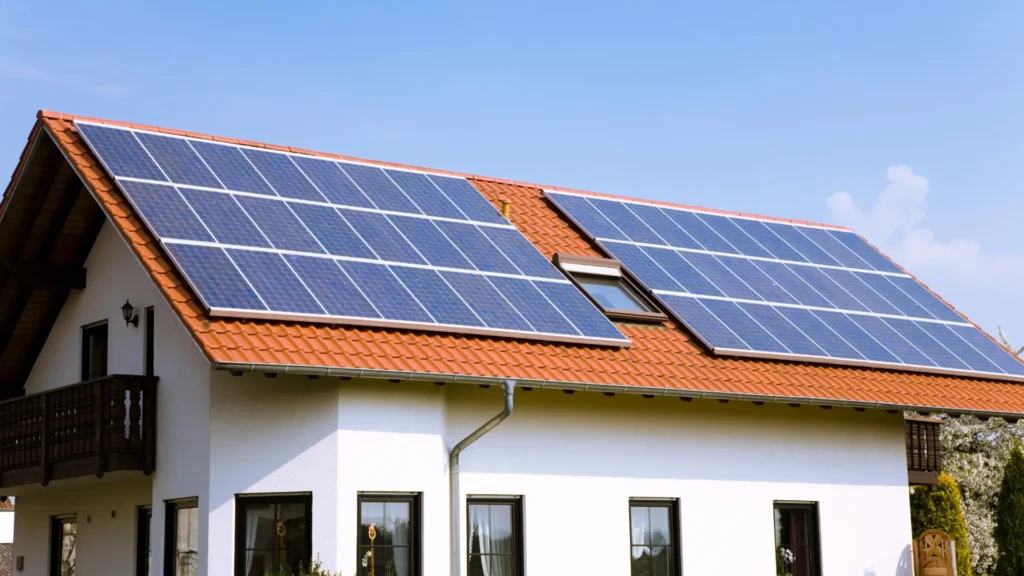
Real Stories And Local Examples
Passive solar design isn’t just a theory—it’s a practical approach that’s already changing how people in Central Otago live, build, and heat their homes. To make the benefits of this design philosophy more relatable, let’s explore a real-world example of how a local homeowner applied passive solar principles and saw impressive results in both comfort and energy savings.
Jane, a homeowner in Alexandra, had been living in her 1980s-built brick house for over a decade. While the house had solid bones, it struggled through the extreme seasonal shifts of Central Otago. Winters meant heavy reliance on electric heaters, with power bills regularly exceeding $400 a month. Summers, on the other hand, left her living room uncomfortably hot and requiring constant fan use. Frustrated by the costs and discomfort, Jane began exploring sustainable solutions that didn’t involve ripping everything apart or installing expensive tech.
With the help of a local architect specializing in passive solar design, Jane learned that even small, strategic changes could make a big difference. The first step was assessing the orientation of her home. Although not perfectly north-facing, the main living area received enough sun during the day to be effective. The team recommended several changes: replacing the old single-pane windows with double-glazed units, adding thermal curtains, insulating the ceiling and underfloor, and using a darker concrete overlay in the living room floor to act as thermal mass.
During the first winter after the upgrades, Jane noticed a dramatic improvement. Her home retained warmth well into the evening without relying on heaters, and her power bill dropped by nearly 50 percent. The summer heat was also more manageable thanks to better ventilation and well-placed exterior shading. In Jane’s words, “We cut our winter power bill in half just by rethinking our windows and insulation.”
Stories like Jane’s highlight how passive solar principles can be applied in practical, cost-effective ways—even in older homes. Local professionals such as Eco Design Otago and GreenHaus Architects have become go-to names in the region for sustainable, passive design solutions. Their expertise ensures that homes are not only energy-efficient but also tailored to the unique climate of Central Otago.
By focusing on smart design, natural energy flow, and thermal efficiency, homeowners across the region are proving that sustainable living isn’t a trend—it’s a transformation. These local success stories show that with the right guidance and mindset, passive solar design can lead to long-lasting comfort and lower energy costs, all while reducing environmental impact.

Common Myths And Misconceptions
When it comes to passive solar design, there are quite a few myths and misunderstandings floating around—especially for homeowners in regions like Central Otago. Many people assume it’s only for new builds, or that it requires expensive materials or compromises on style. In reality, passive solar design is incredibly adaptable and often much more accessible than people think. Let’s clear up some of the most common myths and misconceptions.
“It Only Works In Warm Climates”
One of the biggest misconceptions is that passive solar design is only effective in warm or tropical regions. This couldn’t be further from the truth. In fact, passive solar design is especially valuable in colder climates like Central Otago, where winter temperatures can drop significantly. The key is maximizing sun exposure during the day and retaining that heat at night. Well-designed homes in Central Otago can remain warm and comfortable throughout winter without relying heavily on electric or gas heating. It’s not about being in a warm place—it’s about designing smartly for your climate.
“It’s Too Expensive”
Another myth is that passive solar homes are more expensive to build or renovate. While it’s true that careful planning is essential, passive design doesn’t necessarily require high-end materials or cutting-edge technology. Many of the most effective features—such as insulation, thermal mass, and window orientation—are cost-effective when planned early in the design process. Even retrofitting an existing home with better glazing or shading can offer major returns on investment. Over time, the savings on heating and cooling bills far outweigh any upfront costs, making passive solar one of the most budget-smart approaches to home design.
“It Looks Ugly Or Boxy”
Some people assume that passive solar homes have to look plain, boxy, or overly utilitarian. But modern passive solar design is incredibly flexible in terms of aesthetics. You don’t have to sacrifice beauty for performance. In fact, many passive solar homes feature large, light-filled spaces, natural materials, and seamless integration with their surroundings. Architects and designers today are blending sustainability with style, proving that energy-efficient homes can also be architecturally stunning. With the right team, your passive solar home can reflect your personal taste while performing brilliantly year-round.
“You Can’t Do Passive Solar In Existing Homes”
Many homeowners think passive solar design is only possible with new builds, but that’s not the case. While building from scratch gives you the greatest flexibility, existing homes can still benefit from passive solar upgrades. For example, adding north-facing windows, increasing insulation, installing thermal mass flooring, or using deciduous trees for shading are all effective and relatively simple strategies. Even small changes can make a noticeable difference in comfort and energy use. The key is assessing your current home’s layout and identifying realistic opportunities to improve its solar performance without starting from zero.
In summary, passive solar design is not limited by climate, budget, appearance, or building age. It’s a smart, sustainable approach that’s well-suited to the unique conditions of Central Otago. By breaking through these common myths, more homeowners can unlock the comfort, savings, and environmental benefits that passive solar homes offer.
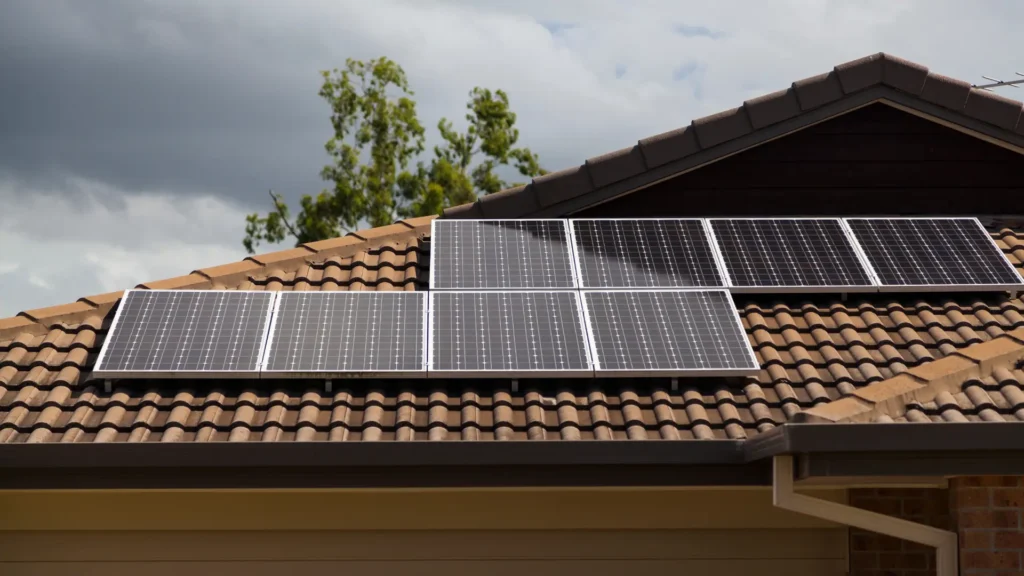
The Benefits Beyond The Bills
When it comes to building or renovating a home in Central Otago, passive solar design offers more than just lower energy bills. While saving money is a major advantage, the true value of this design approach goes far deeper. It impacts your lifestyle, the environment, and even the future resale potential of your home. Let’s take a closer look at the broader benefits that make passive solar design a smart and sustainable choice.
Reduced Carbon Footprint
One of the most compelling reasons to embrace passive solar design is its ability to significantly reduce your home’s carbon footprint. By relying on the sun’s natural energy to heat and cool your living space, you’re cutting down on the need for electricity and fossil fuels. This means fewer greenhouse gas emissions are released into the atmosphere. For eco-conscious homeowners, this is a practical way to live more sustainably without making major lifestyle sacrifices. In a region like Central Otago, where sunshine is abundant, it makes perfect sense to use what nature provides instead of overloading the grid with artificial heating and cooling demands.
Increased Home Resale Value
Homes built with energy efficiency in mind, especially those incorporating passive solar principles, are becoming increasingly attractive to buyers. More people are looking for properties that are not only comfortable and stylish but also cost-effective to run. A well-designed passive solar home in Central Otago offers exactly that—year-round comfort with low energy bills. In a competitive real estate market, energy-efficient homes often sell faster and at a premium compared to conventional houses. Buyers see long-term value in features like natural heating, quality insulation, and sustainable construction—all of which contribute to a better resale price.
Healthier Indoor Environment
Passive solar homes are not only efficient—they’re also healthier to live in. These homes are designed to maintain steady indoor temperatures and encourage natural ventilation. As a result, they often have better air quality, fewer cold drafts, and less moisture buildup. For families with young children, elderly residents, or those sensitive to allergens, this can lead to fewer respiratory issues and an overall improvement in wellbeing. Natural lighting, which is a key feature of passive solar design, also supports mental health by creating bright and uplifting living spaces.
Less Dependence On Electric/Gas Heating
Traditional homes in Central Otago often rely heavily on electric heaters, heat pumps, or gas systems to stay warm in winter. While effective, these systems can be expensive to run and subject to energy price fluctuations. Passive solar design reduces the need for constant artificial heating by using solar gain, thermal mass, and insulation to naturally regulate indoor temperatures. The less you depend on the grid, the more control you have over your household costs—and the more resilient your home becomes during energy outages or supply shortages. This independence is not only practical but also empowering for homeowners.
By considering the benefits beyond just monthly energy savings, it becomes clear that passive solar design is a holistic approach to modern living. It aligns comfort, health, financial security, and environmental responsibility into one well-rounded solution—especially suited for the unique climate and lifestyle of Central Otago.
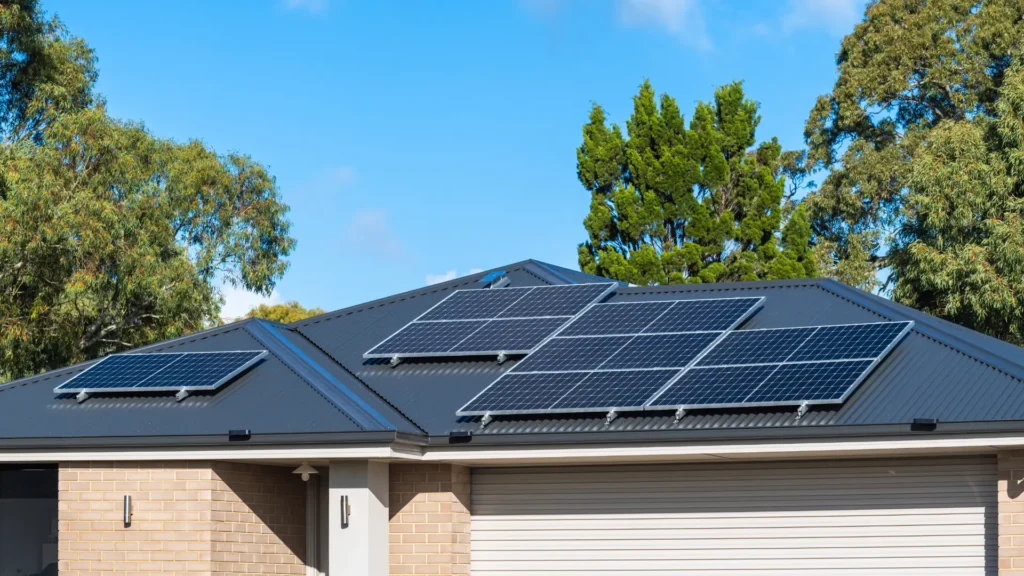
Getting Started – Your Passive Solar Journey In Central Otago
Starting your passive solar journey in Central Otago doesn’t have to be overwhelming. Whether you’re planning a new build or thinking about upgrading your current home, taking the first few steps toward a smarter, more sustainable design is entirely achievable. The key is to work with the right people, make informed decisions, and take things one step at a time based on your goals and budget.
One of the most important steps you can take early on is partnering with a local designer or architect who understands Central Otago’s unique climate conditions. The region’s hot summers and cold winters require thoughtful design solutions, and professionals with experience in this area can guide you in choosing the right orientation, materials, and layout that will work best on your specific site. Local expertise ensures that your home will be built or renovated with maximum comfort and energy efficiency in mind from the beginning.
Before you jump into construction or major renovation, it’s also crucial to evaluate your site. Factors such as sunlight exposure, surrounding landscape, wind direction, and shading from nearby buildings or trees all influence how well passive solar principles will perform. There are tools and services available to help you with this, including sun path analysis software or consultation services from energy efficiency specialists. These assessments can reveal whether small design adjustments could lead to better thermal performance throughout the year.
If building a full-scale passive solar home feels like too big of a leap, don’t hesitate to start small. Adding thermal curtains, upgrading to double glazing, installing adjustable shading systems, or repositioning furniture to optimize heat absorption can all make a noticeable difference. Each of these changes can be implemented over time, helping you ease into passive design while still seeing real-world benefits in comfort and energy savings.
For more in-depth guidance, several reliable resources are available to Central Otago homeowners. Organizations like BRANZ (Building Research Association of New Zealand), Sustainable Homes New Zealand, and your local council often provide design guides, checklists, and case studies that are tailored to the local climate and building regulations. These resources can help you understand what’s feasible on your property and inspire your project with proven design examples.
Whether you’re renovating or starting fresh, our team can help you harness the power of passive solar design to create a home that’s warm, efficient, and built for the Central Otago climate.

FAQs: About Passive Solar Design In Central Otago
What is passive solar design?
Passive solar design is a building approach that uses natural sunlight, heat, and airflow to heat and cool a home without relying on mechanical systems. It focuses on building orientation, thermal mass, insulation, window placement, and shading to maintain comfortable indoor temperatures year-round.
Why is passive solar design ideal for Central Otago?
Central Otago has a dry continental climate with hot summers, cold winters, and lots of sunshine. These conditions make it perfect for passive solar homes that can absorb warmth during the day and retain it through the night, reducing the need for electric or gas heating.
Can I retrofit my existing home for passive solar performance?
Yes, many passive solar principles can be applied to existing homes. Common retrofits include improving insulation, upgrading to double glazing, adding thermal mass (like concrete flooring), and installing shading for summer.
How much can I save on energy bills with passive solar design?
Savings vary based on the home’s design and efficiency, but many homeowners report significant reductions in heating and cooling costs—often up to 50% or more—thanks to passive solar features.
What’s the difference between passive and active solar systems?
Passive solar design relies on the structure and materials of the building to control heat and airflow. Active solar systems, such as solar panels or solar water heaters, use mechanical devices to capture and convert solar energy into electricity or hot water.
What materials are best for thermal mass in passive solar homes?
Concrete, brick, stone, and tiles are commonly used for thermal mass because they absorb and slowly release heat. These materials are often used in floors or interior walls exposed to direct sunlight.
Do passive solar homes look modern or stylish?
Absolutely! Passive solar design can be incorporated into a wide range of architectural styles. With good planning, these homes can be both energy-efficient and visually appealing, blending modern aesthetics with sustainability.
Do I need a north-facing home in Central Otago for passive solar design to work?
North-facing orientation is ideal in the Southern Hemisphere because it maximizes sun exposure in winter. However, even homes that aren’t perfectly north-facing can still benefit from passive solar strategies with proper design adjustments.
Are there professionals in Central Otago who specialize in passive solar design?
Yes, there are local architects, builders, and designers who understand Central Otago’s climate and specialize in passive and sustainable design. It’s worth consulting with experts who can help you make the most of your site and budget.
Is passive solar design more expensive to build?
The initial design phase may require more planning, but many passive solar features, such as insulation and window placement, don’t add significant cost. Over time, the energy savings and increased comfort more than make up for any upfront investment.
Conclusion
Passive solar design is one of the smartest and most sustainable ways to create comfortable living spaces in Central Otago, where the natural climate offers more opportunities than obstacles. By thoughtfully designing your home to work with the sun—through smart orientation, well-placed windows, thermal mass, and insulation—you can enjoy a naturally warm, energy-efficient environment year-round without relying heavily on heating or cooling systems. Whether you’re planning a new build, renovating an older home, or simply exploring better ways to live sustainably, passive solar design offers a practical, long-term solution. Central Otago’s clear skies and generous sunshine aren’t challenges to overcome—they’re powerful resources you can harness to reduce energy bills, lower your carbon footprint, and live more comfortably in harmony with your surroundings.

